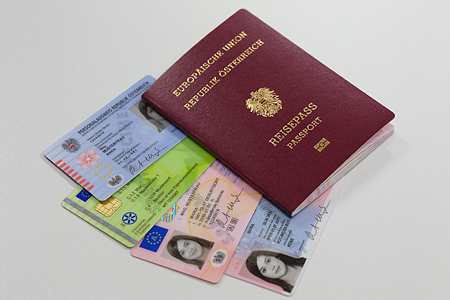Number of Naturalizations in Austria Continues to Rise Despite Covid
Despite the COVID-19 pandemic, naturalizations in Austria have increased in the first half of 2021. During this time Austria granted citizenship to 5,057 people. In the same period, however, Vienna experienced a decrease in the number of naturalizations. Read more about the details of this trend and how they vary among the federal states of Austria.
 About 40 percent of the new Austrians were citizens of Turkey, Bosnia and Herzegovina, Serbia, Kosovo, the United States, or Israel before the naturalization. / Picture: © BMI Bundesministerium für Inneres / Alexander Tuma
About 40 percent of the new Austrians were citizens of Turkey, Bosnia and Herzegovina, Serbia, Kosovo, the United States, or Israel before the naturalization. / Picture: © BMI Bundesministerium für Inneres / Alexander Tuma
Despite the COVID-19 pandemic, naturalizations in Austria have increased in the first half of 2021. In this period, Austria granted citizenship to 5,057 people. This included 693 people living abroad.
Compared to the first half of 2020 (4,254 naturalizations), there were 18.9 percent more naturalizations than in the first half of 2021. However, there were 5.5 percent fewer than in the first half of 2019 (5,349 naturalizations), the comparable period before the start of the COVID-19 pandemic.
According to the report by Statistics Austria, about one-third of those naturalized in the first half of 2021 were already born in Austria (1,582 or 31.3 percent), and more than half of these were women (53 percent). The share of children under the age of 18 was 31.8 percent.
Before naturalization, two-fifths (1,995 or 39.5 percent) of the new Austrians were citizens of one of these six countries: Turkey (432), Bosnia and Herzegovina (422), Serbia (419), Kosovo (258), United States (234) and Israel (230).
In six of the federal states of Austria, more people were naturalized in the first half of 2021 than in the same period of the previous year. Compared to the first half of 2019, however, there were only more naturalizations in three federal states (Carinthia, Tyrol and Salzburg), while there were fewer in six federal states.
Compared to before the COVID-19 pandemic, the decline in naturalizations was particularly sharp in Vienna (-32.5 percent from 2019 to 2021). This decline in Vienna included a 6 percent decrease when comparing the first half of 2020 and 2021.
Styria showed the second-largest decrease, -25.2 percent, when comparing the first halves of 2019 and 2021. Styria experienced an even larger decrease than Vienna–14.3 percent fewer naturalizations–when comparing the first half of 2020 to 2021.
According to the report, more than two-thirds of all naturalizations in the first half of 2021 were on the basis of a legal right (3,460 people or 68.4 percent). Among them, 2,027 were naturalized after at least six years of residence in Austria and for reasons worthy of special consideration (e.g. proven German language skills and sustainable integration, birth in Austria, EEA citizenship or eligible for asylum).
Politically persecuted people and their descendants accounted for 715 naturalizations, 286 were on the basis of marriage to an Austrian, and 236 were on the basis of residence in Austria for at least 15 years and sustainable integration.
A further 406 people were granted citizenship on a discretionary basis (8 percent), including 376 people after at least ten years of residence. Under the title of extension of conferral, a total of 1,191 people or 23.6 percent were naturalized, including 144 spouses and 1,047 children.



